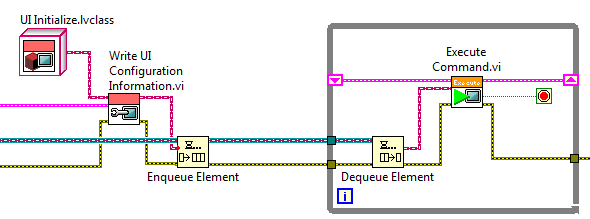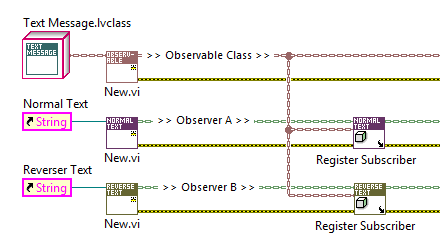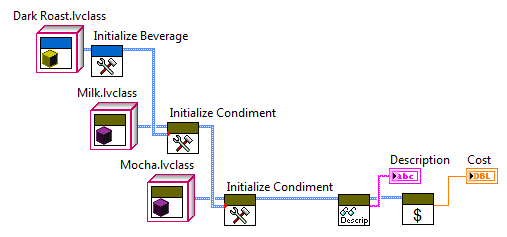-
NI Community
- Welcome & Announcements
-
Discussion Forums
- Most Active Software Boards
- Most Active Hardware Boards
-
Additional NI Product Boards
- Academic Hardware Products (myDAQ, myRIO)
- Automotive and Embedded Networks
- DAQExpress
- DASYLab
- Digital Multimeters (DMMs) and Precision DC Sources
- Driver Development Kit (DDK)
- Dynamic Signal Acquisition
- FOUNDATION Fieldbus
- High-Speed Digitizers
- Industrial Communications
- IF-RIO
- LabVIEW Communications System Design Suite
- LabVIEW Electrical Power Toolkit
- LabVIEW Embedded
- LabVIEW for LEGO MINDSTORMS and LabVIEW for Education
- LabVIEW MathScript RT Module
- LabVIEW Web UI Builder and Data Dashboard
- MATRIXx
- Hobbyist Toolkit
- Measure
- NI Package Manager (NIPM)
- Phase Matrix Products
- RF Measurement Devices
- SignalExpress
- Signal Generators
- Switch Hardware and Software
- USRP Software Radio
- NI ELVIS
- VeriStand
- NI VideoMASTER and NI AudioMASTER
- VirtualBench
- Volume License Manager and Automated Software Installation
- VXI and VME
- Wireless Sensor Networks
- PAtools
- Special Interest Boards
- Community Documents
- Example Programs
-
User Groups
-
Local User Groups (LUGs)
- Aberdeen LabVIEW User Group (Maryland)
- Advanced LabVIEW User Group Denmark
- ASEAN LabVIEW User Group
- Automated T&M User Group Denmark
- Bangalore LUG (BlrLUG)
- Bay Area LabVIEW User Group
- British Columbia LabVIEW User Group Community
- Budapest LabVIEW User Group (BudLUG)
- Chicago LabVIEW User Group
- Chennai LUG (CHNLUG)
- CSLUG - Central South LabVIEW User Group (UK)
- Delhi NCR (NCRLUG)
- Denver - ALARM
- DutLUG - Dutch LabVIEW Usergroup
- Egypt NI Chapter
- Gainesville LabVIEW User Group
- GLA Summit - For all LabVIEW and TestStand Enthusiasts!
- GUNS
- High Desert LabVIEW User Group
- Highland Rim LabVIEW User Group
- Huntsville Alabama LabVIEW User Group
- Hyderabad LUG (HydLUG)
- Indian LabVIEW Users Group (IndLUG)
- Ireland LabVIEW User Group Community
- LabVIEW GYM
- LabVIEW LATAM
- LabVIEW Team Indonesia
- LabVIEW - University of Applied Sciences Esslingen
- LabVIEW User Group Berlin
- LabVIEW User Group Euregio
- LabVIEW User Group Munich
- LabVIEW Vietnam
- Louisville KY LabView User Group
- London LabVIEW User Group
- LUGG - LabVIEW User Group at Goddard
- LUGNuts: LabVIEW User Group for Connecticut
- LUGE - Rhône-Alpes et plus loin
- LUG of Kolkata & East India (EastLUG)
- LVUG Hamburg
- Madison LabVIEW User Group Community
- Mass Compilers
- Melbourne LabVIEW User Group
- Midlands LabVIEW User Group
- Milwaukee LabVIEW Community
- Minneapolis LabVIEW User Group
- Montreal/Quebec LabVIEW User Group Community - QLUG
- NASA LabVIEW User Group Community
- Nebraska LabVIEW User Community
- New Zealand LabVIEW Users Group
- NI UK and Ireland LabVIEW User Group
- NOBLUG - North Of Britain LabVIEW User Group
- NOCLUG
- NORDLUG Nordic LabVIEW User Group
- North Oakland County LabVIEW User Group
- Norwegian LabVIEW User Group
- NWUKLUG
- Orange County LabVIEW Community
- Orlando LabVIEW User Group
- Oregon LabVIEW User Group
- Ottawa and Montréal LabVIEW User Community
- Phoenix LabVIEW User Group (PLUG)
- Politechnika Warszawska
- PolŚl
- Rhein-Main Local User Group (RMLUG)
- Romandie LabVIEW User Group
- Rutherford Appleton Laboratory
- Sacramento Area LabVIEW User Group
- San Diego LabVIEW Users
- Sheffield LabVIEW User Group
- Silesian LabVIEW User Group (PL)
- South East Michigan LabVIEW User Group
- Southern Ontario LabVIEW User Group Community
- South Sweden LabVIEW User Group
- SoWLUG (UK)
- Space Coast Area LabVIEW User Group
- Stockholm LabVIEW User Group (STHLUG)
- Swiss LabVIEW User Group
- Swiss LabVIEW Embedded User Group
- Sydney User Group
- Top of Utah LabVIEW User Group
- UKTAG – UK Test Automation Group
- Utahns Using TestStand (UUT)
- UVLabVIEW
- VeriStand: Romania Team
- WaFL - Salt Lake City Utah USA
- Washington Community Group
- Western NY LabVIEW User Group
- Western PA LabVIEW Users
- West Sweden LabVIEW User Group
- WPAFB NI User Group
- WUELUG - Würzburg LabVIEW User Group (DE)
- Yorkshire LabVIEW User Group
- Zero Mile LUG of Nagpur (ZMLUG)
- 日本LabVIEWユーザーグループ
- [IDLE] LabVIEW User Group Stuttgart
- [IDLE] ALVIN
- [IDLE] Barcelona LabVIEW Academic User Group
- [IDLE] The Boston LabVIEW User Group Community
- [IDLE] Brazil User Group
- [IDLE] Calgary LabVIEW User Group Community
- [IDLE] CLUG : Cambridge LabVIEW User Group (UK)
- [IDLE] CLUG - Charlotte LabVIEW User Group
- [IDLE] Central Texas LabVIEW User Community
- [IDLE] Cowtown G Slingers - Fort Worth LabVIEW User Group
- [IDLE] Dallas User Group Community
- [IDLE] Grupo de Usuarios LabVIEW - Chile
- [IDLE] Indianapolis User Group
- [IDLE] Israel LabVIEW User Group
- [IDLE] LA LabVIEW User Group
- [IDLE] LabVIEW User Group Kaernten
- [IDLE] LabVIEW User Group Steiermark
- [IDLE] தமிழினி
- Academic & University Groups
-
Special Interest Groups
- Actor Framework
- Biomedical User Group
- Certified LabVIEW Architects (CLAs)
- DIY LabVIEW Crew
- LabVIEW APIs
- LabVIEW Champions
- LabVIEW Development Best Practices
- LabVIEW Web Development
- NI Labs
- NI Linux Real-Time
- NI Tools Network Developer Center
- UI Interest Group
- VI Analyzer Enthusiasts
- [Archive] Multisim Custom Simulation Analyses and Instruments
- [Archive] NI Circuit Design Community
- [Archive] NI VeriStand Add-Ons
- [Archive] Reference Design Portal
- [Archive] Volume License Agreement Community
- 3D Vision
- Continuous Integration
- G#
- GDS(Goop Development Suite)
- GPU Computing
- Hardware Developers Community - NI sbRIO & SOM
- JKI State Machine Objects
- LabVIEW Architects Forum
- LabVIEW Channel Wires
- LabVIEW Cloud Toolkits
- Linux Users
- Unit Testing Group
- Distributed Control & Automation Framework (DCAF)
- User Group Resource Center
- User Group Advisory Council
- LabVIEW FPGA Developer Center
- AR Drone Toolkit for LabVIEW - LVH
- Driver Development Kit (DDK) Programmers
- Hidden Gems in vi.lib
- myRIO Balancing Robot
- ROS for LabVIEW(TM) Software
- LabVIEW Project Providers
- Power Electronics Development Center
- LabVIEW Digest Programming Challenges
- Python and NI
- LabVIEW Automotive Ethernet
- NI Web Technology Lead User Group
- QControl Enthusiasts
- Lab Software
- User Group Leaders Network
- CMC Driver Framework
- JDP Science Tools
- LabVIEW in Finance
- Nonlinear Fitting
- Git User Group
- Test System Security
- Developers Using TestStand
- Product Groups
- Partner Groups
-
Local User Groups (LUGs)
-
Idea Exchange
- Data Acquisition Idea Exchange
- DIAdem Idea Exchange
- LabVIEW Idea Exchange
- LabVIEW FPGA Idea Exchange
- LabVIEW Real-Time Idea Exchange
- LabWindows/CVI Idea Exchange
- Multisim and Ultiboard Idea Exchange
- NI Measurement Studio Idea Exchange
- NI Package Management Idea Exchange
- NI TestStand Idea Exchange
- PXI and Instrumentation Idea Exchange
- Vision Idea Exchange
- Additional NI Software Idea Exchange
- Blogs
- Events & Competitions
- Optimal+
- Regional Communities
- NI Partner Hub
- AristosQueue (NI) on: This Blog Has Moved...
- AristosQueue (NI) on: Using Variant Attributes for High-Performance Lookup Tables in LabVIEW
-
 AELmx
on:
See you at NIWeek!
AELmx
on:
See you at NIWeek!
-
 ramktamu
ramktamu
 on:
Video on Measurement Abstraction Layers, MVC and the Actor Framework
on:
Video on Measurement Abstraction Layers, MVC and the Actor Framework
-
 TroyK
on:
data export to a single excell sheet
TroyK
on:
data export to a single excell sheet
-
 amandion
on:
When Should the 'To More Specific' or 'Preserve Tun-Time Class' Primitives be Used with OOP in LabVIEW?
amandion
on:
When Should the 'To More Specific' or 'Preserve Tun-Time Class' Primitives be Used with OOP in LabVIEW?
-
 vishots.com
on:
Best Practices for Dynamic VI Loading (VI Lifetime Management Video)
vishots.com
on:
Best Practices for Dynamic VI Loading (VI Lifetime Management Video)
-
 sth
sth
 on:
Recorded Virtual User Group on Team-Based Development and Source Code Control
on:
Recorded Virtual User Group on Team-Based Development and Source Code Control
-
 PaulLotz
on:
Using Events for Communication Between Asynchronous LabVIEW Loops
PaulLotz
on:
Using Events for Communication Between Asynchronous LabVIEW Loops
- AristosQueue (NI) on: Error Cluster Constant for LabVIEW 2011
Object Oriented Design Patterns for LabVIEW that Can Make Your Life Easier
- Subscribe to RSS Feed
- Mark as New
- Mark as Read
- Bookmark
- Subscribe
- Printer Friendly Page
- Report to a Moderator
I’d like to start by wishing everyone a belated happy new year! Time to jump into a new year of LabVIEW programming…
It’s easy to tell code that uses standard design patterns from code that doesn’t – it’s the difference between being able to understand how the application works and having no idea what’s going on without spending a significant amount of time studying the code. This is especially important when working with a team of developers or when developing an application that will need to be maintained over a long-period of time. In either scenario, it’s highly likely that someone besides yourself will have to modify or update the code. This person may not be an expert in exactly what your application does, but if it uses a familiar design pattern, they’ll at least be able to recognize familiar constructs and quickly start contributing.
There are a handful of G-specific design patterns that proficient LabVIEW programmers should already be aware of, including state machines, functional globals, and producer-consumer loops, but LabVIEW programmers should also look to apply concepts from the computer science world to address problems that are universal to all languages. Some of the best-known patterns were first published by a group of authors known as the ‘gang-of-four’ in a book titled ‘Design Patterns: Elements of Reusable Object-Oriented Software’. Since then, the list of object-oriented design patterns has continued to expand to address the growing number of complex software challenges.
One of the first steps when designing software should be to identify where and how standard patterns can be used in your application. This process requires isolating and defining what needs to be achieved in order to meet very specific design requirements, which is a level deeper than the overall architecture of the application. There are numerous examples of patterns and the problems they address, several of which can be found here, but as a starting point, consider the following four patterns and their implementation in LabVIEW.
Factory Pattern
The factory pattern has been referred to as the most commonly used pattern in modern languages. A factory creates objects without exposing the instantiation logic to the client and refers to the newly created object through a common interface. It’s commonly used in applications that have a plugin component, or some functionality that needs to be loaded dynamically at run-time. This requires the definition of a generic parent object, which encapsulates functionality that can then be reused and even extended by children. [More Info]

Figure 1: This simple snippet of code in LabVIEW enables an application to load children of ‘Generic Plugin.lvclass’ at runtime without having to be aware of the children or their specific functionality ahead of time.
Command Pattern
The command pattern is especially relevant to LabVIEW programmers, as it can help address some of the challenges typically associated with sending a command or a message between processes. This typically requires the coupling of the command itself with any data required by that command to execute, which is often achieved by using a cluster containing the command as an enumerated constant and a variant for an arbitrary data-type. The command pattern instead instantiates a new instance of a child class to represents the specific command, which defines the information to be associated with that command within the private data. [more info]

Figure 2: The command pattern uses child classes to represent commands or messages that need to be sent to a consumer loop. Data associated with the command is stored within the object, and the execute method is overridden by each specific class to implement the functionality required to handle the specific message.
Observer
As the name implies, the observer pattern can be constructed in LabVIEW such that an observer is aware of changes made to the parent observerable class. In this particular example, the observable class has a method that modifies the data of a class that is referred to by a data value reference. Throughout the lifetime of the observable class, multiple observers may subscribe and unsubscribe. [more info]

Figure 3: In this example, two string indicators are subscribed to an observable class, ‘Text Message.lvclass.’ The observable class stores an array of data value references to observers, which are then retrieved and modified when the method to update observers is run.
Decorator
Applications are often designed with the knowledge that future functionality will need to be added at a later date, but this is best done without the risk associated with modifying pre-existing code that is tested. The decorator pattern can help in such a scenario, by making it possible to add responsibilities and information dynamically to an object. [more info]
 Figure 4: The original object, which is a Dark Roast coffee, is decorated with additional properties by children of a separate hierarchy for condiments. The set of condiments can dynamically be expanded without modifying peers. Invoking the methods to get the cost and the description recursively iterates through all the decorations to aggregate the total values.
Figure 4: The original object, which is a Dark Roast coffee, is decorated with additional properties by children of a separate hierarchy for condiments. The set of condiments can dynamically be expanded without modifying peers. Invoking the methods to get the cost and the description recursively iterates through all the decorations to aggregate the total values.
These four patterns are just a small number of simple examples illustrating how object-oriented design patterns can be used to solve common problems. To download examples and see many more examples of how object-oriented design patterns can be applied to LabVIEW, visit the community site Applying Common Object-Oriented (OO) Design Patterns in LabVIEW
NI Director, Software Community
You must be a registered user to add a comment. If you've already registered, sign in. Otherwise, register and sign in.
